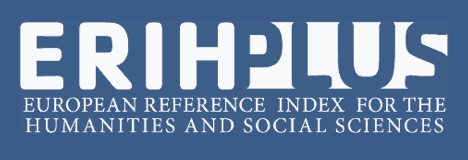INTRODUCING THE MAIN AND ACCESSORY MINERALS IN THE GRANITOID BATHOLITH OF SHIRKUH, YAZD (CENTRAL IRAN) AND ITS TOURMALINE AND GARNET PHASES
Abstract
Batholith of Shirkuh, Yazd, is part of the central Iranian structural zone, located southwest of the province. The batholith is composed of five rock units, namely monzogranite, granodiorite, quartz monzonite, quartz monzodiorite, and syenogranite.The batholith, having cut through the Nayband formation (Upper Triassic), with Cretaceous limestones and a sandstone and conglomerate unit (Lower Cretaceous) lying on top as an angular unconformity, probably dates back to the Jurassic. Field and experimental investigations revealed various accessory minerals in the granite mass, including garnet, tourmaline, amphibole, zircon, sphene, apatite, biotite, muscovite, and epidote. The garnet, tourmaline, and amphibole were investigated by an Electron Microprobe (EMP), revealing the granite mass to be of almandine, grossular, and uvarovite types, the tourmaline of the rossmanite and foitite types, and amphiboles of the tschermakite and hornblende types.
References
ALMEIDA, M. E.; MACAMBIRA, M. J. B.; OLIVEIRA, E. C. Geochemistry and zircon geochronology of the I-type high-K calk-alkaline and S-type granitoid rocks from southeastern Roraima, Brazil: Orosirian collisional magmatism evidence (1.97- 1.96 Ga) in central portion of Guyana Shield. Perecambrian Research 155, p. 69-97, 2007.
ARSALAN, M.; ASLAN, Z. Mineralogy, petrography and whole- rock geochemistry of the Tertiary granitic intrusions in the Eastern Pontides, Turkey. Journal of Asian Earth Sciences 27, p. 177-193, 2006.
BARBARIN, B. A review of the relationships between granitoid types, their origins and their geodynamic enviroments. Blackwell Oxford Lithos 46, p. 605- 626, 1999.
CHAPPELL, B. W.; WHITE, A. J. R. I-and S-type granites in the Lachlan fold belt. Transactions of the Royal Society of Edinburgh Earth Sciences 83, p. 1-26, 1992.
CHAPPELL, B. W.; WHITE, A. J. R. Two contrasting granite types: 25 years later, Australian. Journal of Earth Sciences 48, p. 489-499, 2001.
CLARKE, D. B. Granitoid rocks. London: Chapman and Hall Publisher, 1992.
DE LA ROCHE, H.; LETERRIER, J.; GRAND CLAUDE, P.; MARCHEL, M. A classification of volvanic and plutonic rocks using R1-R2 diagrams and major elements analysis-its relationshis with current nomenclature. Chemical Geology 29, p. 183-210, 1990.
FROST, B. R.; BARNES, C. G.; COLLINS, W. J.; ARCULUS, R. J.; ELLIS, D. J.; FROST, C. D. A geocemical classification for granitic rocks. Journal of Petrology 42, p. 2033-2048, 2001.
HAJMOLLA ALI, A. Geological map of Khezrabad 1:100000, Sreies sheet 6753. Geological survey of Iran, Tehran (in Persion), 1993.
HAJMOLLA ALI, A.; MAJIDIFAR M.R. Geological map of Yazd 1:100000. Geological survey of Iran, Tehran (in Persion), 2000.
HARKER, A. The natural history of igneous rocks. London: Methuen, 1909.
JANOUSEK FARROW, C. M.; ERBAN, V. Package “GCDKit” .Version 3.00. 2008.
KHODAMI, M.; KAMALI SHERVEDANI, A. Mineralogical and geochemical characteristics of the Chah-Shur clay deposit, Southeast of Isfahan, Iran, Iranian Journal of Earth Sciences, 10(2), p. 135-141, 2018.
LAMEYRE, J.; BOWDEN, P. Plutonic rock types series: discrimination of various granitoid and related rocks. Journal of Volcanology and Geothermal Research 14, p. 169-86, 1982.
MOBASHERGARMI, M.; ZARAISAHAMIA, R.; AGHAZADEH, M.; AHMADIKHALAJI, A.; AHMADZADEH, GH. Mineral chemistry and thermobarometry of Eocene alkaline volcanic rocks in SW Germi, NW Iran, Iranian Journal of Earth Sciences 10 (1), p. 39-51, 2018.
NOVRUZOV, N.; VALIYEV, A.; BAYRAMOV, A.; MAMMADOV, S.; IBRAHIMOV, J.; EBDULREHIMLI, A. Mineral composition and paragenesis of altered and mineralized zones in the Gadir low sulfidation epithermal deposit (Lesser Caucasus, Azerbaijan), Iranian Journal of Earth Sciences, 11(1), p. 14-29, 2019.
PARADA, M. A.; NYSTROM, J. O.; LEVI, B. Multiple source for the Costal Batholith of Central Chile: geochemical a Sr- Nd isotopic evidence and tectonic implication. Lithos 46, p. 505-521, 1999.
PEARSE, J. Sources and setting granitic rocks. Episodes 19 (4), p. 120-125, 1996.
PICHER, W. S. The nature and origin of granite. London: Chapman and Hall, 1995.
ROLLINSON, H. R. Using geochemical data: evaluation, presenation, interpretation. Harlow: Longman, 1993.
SHELLEY, D. Hgneouse and metamorphic rocks under the microscope, classification, textures, microstructurs and mineral preferred- orientathons. London: Chapman and Hall, 1993.
SUTCLIFFE, R. H.; SMITH, A. R.; DOHERTY, W.; BARNET, R. I. Mantel derivation of Archean amphibole- bearing granitoid and associated mafic rocks: evidence from the southern superior province, Canada. Mineralogy and Petrology 105, p. 255-274, 1990.
YAZDI, A.; ASHJA-ARDALAN, A.; EMAMI, M.H.; DABIRI, R.; FOUDAZI, M. Chemistry of Minerals and Geothermobarometry of Volcanic Rocks in the Region Located in Southeast of Bam, Kerman Province. Open Journal of Geology, 7, p. 1644-1653, 2017.
YAZDI, A.; ASHJA-ARDALAN, A.; EMAMI, M.H.; DABIRI, R.; FOUDAZI, M. Magmatic interactions as recorded in plagioclase phenocrysts of quaternary volcanics in SE Bam (SE Iran). Iranian Journal of Earth Sciences, 11(3), p. 215-224, 2019.

This work is licensed under a Creative Commons Attribution-NonCommercial 4.0 International License.
Policy Proposal for Free Access Journals
Authors who publish in this journal agree to the following terms:
a. Authors retain the copyright and grant the journal the right of first publication, with the work simultaneously licensed under the Creative Commons Attribution License which allows the sharing of the work with acknowledgment of the authorship of the work and initial publication in this journal.
b. Authors are authorized to take additional contracts separately, for non-exclusive distribution of the version of the work published in this journal (eg publish in institutional repository or as a book chapter), with acknowledgment of authorship and initial publication in this journal.
c. Authors are allowed and encouraged to publish and distribute their work online (eg in institutional repositories or on their personal page) at any point before or during the editorial process, as this can generate productive changes, as well as increase the impact and The citation of published work (See The Effect of Free Access).





















